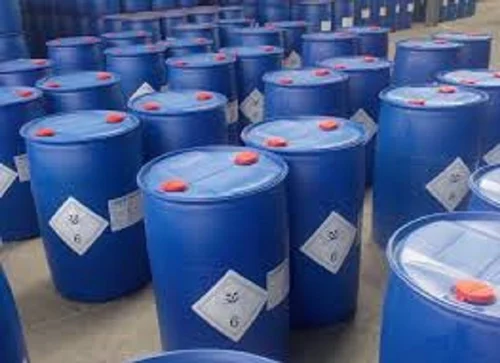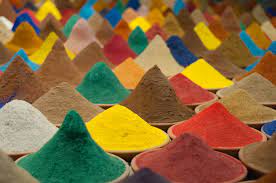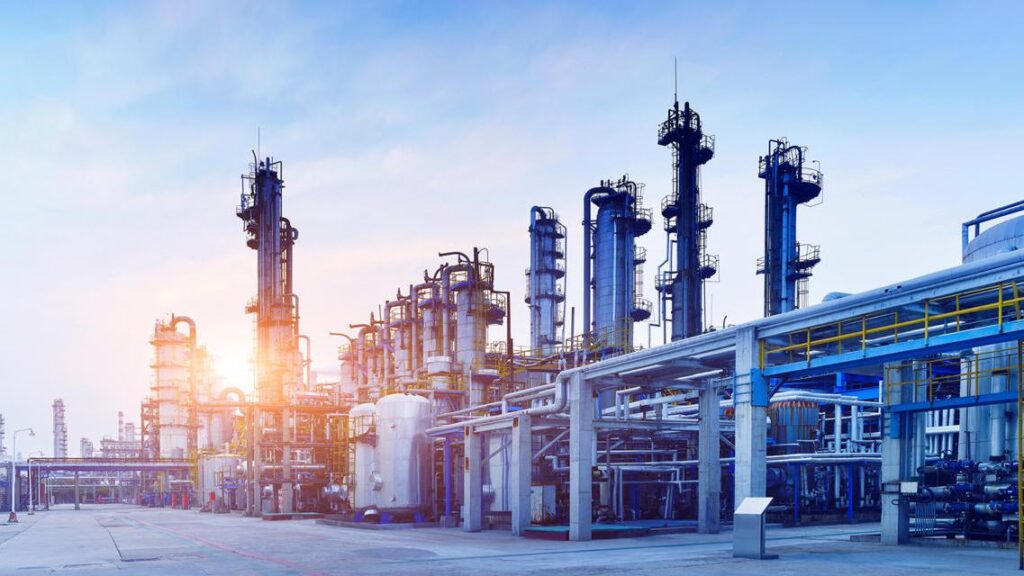INDUSTRIAL & FINE CHEMICALS:
There are many different types of industrial and fine chemicals, but some examples include:
- Acids: such as sulfuric acid, hydrochloric acid, and nitric acid. These are widely used in the chemical industry for a variety of purposes, including as catalysts, cleaning agents, and raw materials for other chemicals.
- Alkalis: such as sodium hydroxide and potassium hydroxide. These are used in a wide range of industrial applications, including in the production of soaps and detergents, textiles, and pulp and paper.
- Solvents: such as ethanol, methanol, and toluene. These are used as a medium for chemical reactions, as a cleaning agent, and as a raw material for other chemicals.
- Organic compounds: such as benzene, toluene, and xylene. These are used as raw materials for the production of plastics, synthetic fibers, and other chemicals.
- Inorganic compounds: such as sodium chloride, calcium carbonate, and sodium hydroxide. These are used in a wide range of industrial applications, including in the production of glass, ceramics, and fertilizers.
- Pigments and dyes: such as titanium dioxide, iron oxide, and phthalocyanine. These are used to color a wide range of products, including paints, plastics, and textiles.
- Surfactants: such as sodium dodecylbenzenesulfonate and sodium lauryl ether sulfate. These are used in a wide range of cleaning and personal care products, such as soaps, detergents, and shampoos.
- Pharmaceuticals and fine chemicals: such as antibiotics, hormones, and vitamins. These are used in the pharmaceutical and nutraceutical industry.
- Biocides and preservatives: such as chlorine, hydrogen peroxide, and formaldehyde. These are used to preserve the quality and safety of various products. This is just a small sample of the many different types of industrial and fine chemicals that are used in industry today. The specific chemicals used will depend on the intended application, industry, and regulations.
- Physical and chemical properties: This includes tests such as melting point, boiling point, density, refractive index, and pH, which can provide information about the chemical's behavior and stability.
- Purity and composition: This includes tests such as gas chromatography (GC), mass spectrometry (MS), and infrared spectroscopy (IR), which can be used to identify and quantify the various components of a chemical mixture.
- Contaminants: This includes tests for impurities and unwanted substances, such as heavy metals and pesticides, which can be harmful to human health and the environment.
- Safety: This includes tests such as flammability, explosiveness, and toxicity, which can be used to evaluate the hazards associated with a chemical.
- Stability and shelf life: This includes tests such as thermal stability and accelerated aging, which can be used to evaluate the chemical's shelf life and long-term storage conditions.
- Regulatory compliance: This includes testing to ensure that the chemical meets the regulations and standards set by the relevant authorities, such as the FDA, OSHA, EPA, and REACH.
- Microbiology: This includes testing for various microorganisms such as bacteria, fungi, and yeast, which can affect the chemical quality and safety.
- GMP, HACCP, ISO 22000, etc. certification It's important to note that the specific tests required may vary depending on the type of industrial or fine chemical and its intended use, and the regulations of the country or region where it will be sold. It is always recommended to check with the local authority or regulatory body to know the specific requirement.
 Industrial and fine chemicals are chemical compounds that are used in a wide range of industrial and commercial applications, such as manufacturing, construction, agriculture, and consumer products. Testing of these chemicals is done to ensure that they meet safety and quality standards, and to verify their composition and purity. Some common types of tests that are performed on industrial and fine chemicals include:
Industrial and fine chemicals are chemical compounds that are used in a wide range of industrial and commercial applications, such as manufacturing, construction, agriculture, and consumer products. Testing of these chemicals is done to ensure that they meet safety and quality standards, and to verify their composition and purity. Some common types of tests that are performed on industrial and fine chemicals include:
-
Dyes are colored substances that are used to add color to a wide range of products, such as fabrics, paper, plastics, and food. Dyes can be divided into two main categories: natural dyes and synthetic dyes.
- Natural dyes: These dyes are derived from natural sources, such as plants, animals, and minerals. Examples include indigo (from the indigo plant), cochineal (from the cochineal insect), and madder (from the madder plant).
- Synthetic dyes: These dyes are made artificially in a laboratory. They are used in a wide range of industries, including textiles, printing, food, and cosmetics. Synthetic dyes are divided into different groups: -Azo dyes: These dyes are the most widely used synthetic dyes, and are made from derivatives of benzene and nitrogen. -Anthraquinone dyes: These dyes are used for dyeing cotton and other cellulosic fibers. -Phthalocyanine dyes: These dyes are used for dyeing paper and printing inks. -Acid dyes: These dyes are used for dyeing wool and nylon fibers. -Direct dyes: These dyes are used for dyeing cellulosic fibers. -Sulfur dyes: These dyes are used for dyeing cotton and other cellulosic fibers. -Vat dyes: These dyes are used for dyeing cotton and other cellulosic fibers.
 Dyes are used in a wide range of industries, including textiles, printing, food, and cosmetics. They are used to color fabrics, paper, plastics, food, and other products. Dyes are regulated by the government and must meet certain standards for safety and quality. Companies that produce dyes must ensure that their products meet these standards and comply with the regulations.
Dyes are used in a wide range of industries, including textiles, printing, food, and cosmetics. They are used to color fabrics, paper, plastics, food, and other products. Dyes are regulated by the government and must meet certain standards for safety and quality. Companies that produce dyes must ensure that their products meet these standards and comply with the regulations.
It is important to note that some dyes have been found to have negative effects on health and environment, so they are banned or restricted in some countries. For example, some azo dyes are carcinogenic and are banned from use in the EU, US and Canada. It is recommended to check with the local authority or regulatory body to know the specific requirement and restriction for the dyes in your area.


Testing
Read More
Inspection
Read More
Certification
Read MoreTesting Services
- Drugs & Pharmaceutical Testing
- Cosmetics & Essential Oils Testing
- Medical Devices Testing
- Ayush - Ayurvedic Drug Testing
- Food Products Testing
- Agri Commodities Testing
- Fertilizers and Soil Testing
- Animal Food & Feed Testing
- Water - Drinking Water & Effluent Water Testing
- Industrial Oils and Lubricants & Petroleum Products Testing
- Coal & Coke and Solid Fuels Testing
- Ores & Minerals Testing
- Metals & Alloys Testing
- Plastics, Polymer, Rubber & Rubber Products Testing
- Resins & Adhesives Testing
- Paints, Varnish, Pigments & Surface Coating Testing
- Glass & Ink, Paper & Pulp Testing
- Industrial & Fine Chemicals Testing
- Dyes, Acids and Solvents Testing
- Soaps, Detergents & Toiletries Testing
- Packaging & Packaging Products Testing
- Gold & Silver Assaying & Hallmarking
- Cement, Concrete & Building Materials Testing
- Pollution and Environmental Studies
- Microbiological Assays. Etc.,









